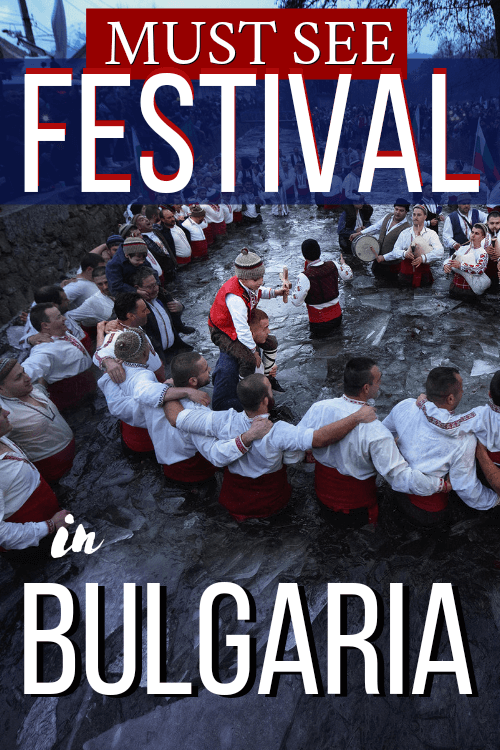Bulgaria is most famous for being the second oldest country in Europe (after San Marino), and for their dairy products like white cheese and yogurt. There are many other things that the country is well known for, so here are a few claims to fame and some lesser known fun facts!

Bulgaria Brought Yogurt to America (and the World)
Dr. Stamen Grigorov was a Bulgarian medical doctor and microbiologist who discovered the bacteria responsible for turning milk into yogurt.
Once this bacteria was isolated, it could be used to make yogurt around the world!
While the yogurt that we enjoy in North America is not made from the official Bulgarian culture, it is thanks to Dr. Grigorov’s groundbreaking discovery.
Bulgaria Has a Government Yogurt Company
Because why not? Their yogurt is a national treasure after all!
In the 1950’s, government microbiologists were sent across the country to find the best and healthiest homemade yogurts.
They isolated their favorite cultures and the state-owned LB Bulgaricum patented the blend.
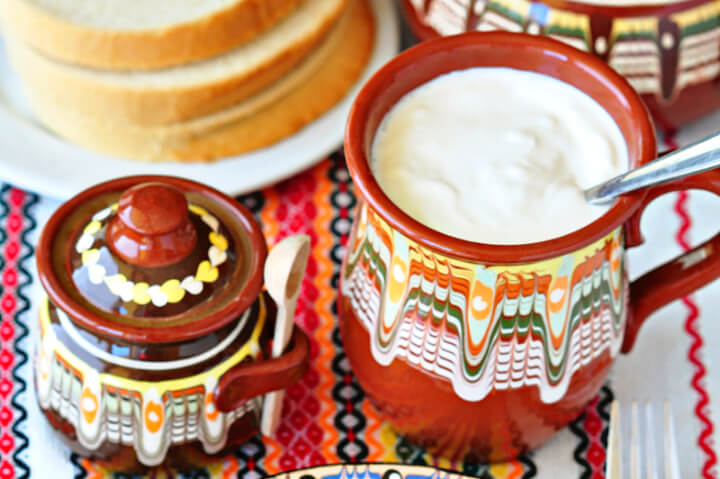
The company still exists and exports Bulgarian yogurt starters around the world. They also manufacture and export their famous cheese.
Bulgaria is Famous for Cheese
Move over Swiss cheese, here comes Bulgarian…well…cheese. Bulgaria’s famous white cheese is called simply: “Cheese,” and closely resembles feta.
(Don’t say that though!)
I would go into more detail, but I have already written the life and times of Bulgarian cheese.
Bulgarians Serve Rare Burgers
Speaking of Bulgarian foods, in Bulgaria you have to specify how you would like your burger cooked.
This is unheard of where I live! The only way you will get an under-done burger here is:
1.) By accident
2.) At an artisan burger place where they sear the outside of the meat before they grind it.

Which leads me to one of my favorite Bulgarian customer service interactions:
Me: “I’ll get the burger.”
Server: “How you want it cooked?”
Me: “…well done?”
Server: “No.”
Me: “Medium?”
Server: “Okay.”
Bulgaria has a Desert
Pobiti Kamani, also know as “Stone Forest” or “Stone Desert” is one of very few deserts in Europe.
This unusual dry patch of land, not far from the city of Varna, features towering stone formations. These rocky pillars are said to be natural, although to look at them that almost seems impossible!
I am not sure if Pobiti Kamani is a true desert, which National Geographic tells me is an arid and dry area that receives no more than 25 cm (10 inches) of rainfall per year.
It seems likely, but it is such a tiny spot that I don’t know rainfall has ever been recorded for that exact area.
The stone forest is home to cacti and even some reptiles!

Bulgaria has Many Reptiles
I was surprised to find out that Bulgaria is home to 38 species of reptiles!
Sure, I assumed the country may be home to a few snakes, and I read that some reptiles live in their desert. As it turns out, many species of reptiles live all over the country.
Bulgaria is even home to six species of turtles, including two endangered ones. A number of lizards and snakes live in the Rhodope Mountains of South-Central Bulgaria.
Bulgaria is the Second Oldest Country in Europe
Now I’m not about to fight anyone over this, but this is one of Bulgaria’s biggest claims to fame.
In terms of continuously inhabited land, it is way up there for how old it is, possibly the oldest country in Europe.
It stands as fact that Bulgaria is the second oldest country in Europe at least in name, having been called Bulgaria since 681 AD.

Only San Marino, a small country landlocked by Italy, has had the same name for as long.
Many will argue that Bulgaria is actually the oldest country in Europe, because San Marino was founded as an independently ruled monastery city, and not really a country.
The size of the area doesn’t matter much, and San Marino was independent, so I feel like they have this one.
(Would love to be explained differently though!)
Bulgaria is the Land of Ancient Thracians
Some once believed that Acient Thracians were a mythological civilization. It was somewhat like Atlantis: Maybe they were real, maybe not.
Bulgaria has turned up an outstanding amount of Thracian treasures that can leave little doubt as to their existence.
Bulgaria is even home to what is called the “Thracian Valley of the Kings” which is a vast area containing an estimated 1500 burial mounds in the center of the country.
A Bulgarian Pig Was Fed From a Bowl of Ancient Gold
In 1924 farmers were digging for a vineyard and discovered the Valchitran Treasure.
Ancient dishes started turning up under their shovels, but at first glance, nobody could tell that they were gold.
The story goes that the farmers started digging around for money once they saw the objects, but found none, and took the dishes home as a consolation prize.
The farmer named Todor Tsvetanov used a large bowl with two handles to feed his pig named Mircho.

Here is a translation of the best part of the story:
“Thus, Mircho became the only pig in history that was fed by a golden (dish). Even the ancient Thracians could not afford this luxury“
It was only after Mircho polished the bowl that the farmer realized it was gold.
This treasure now lives in the National Archaeological Museum in Sofia.
A Bulgarian Hotel was Built Over Roman Ruins
Bulgaria’s capital city of Sofia was once named Serdica, and was an important city in the Ancient Roman and Byzantine Empires.
Roman ruins are being discovered in Sofia to this day, and in 2004 as a hotel was being built in the center of the city, they found something important.
What first appeared to be an ancient wall turned out to be an amphitheatre!
Of course this is Bulgaria, so work was allowed to continue, and now the amphitheatre decorates the lobby of the hotel.
To be honest, while this seems like a travesty at first blush, it may be the best place for it.
Arena di Serdica has a 24 hour front desk, security, and a covered roof. You can still visit for free, so it was actually a great deal for the government.

A Communist Regime Sank an Ancient City
In 1948 the remains of the ancient city of Seuthopolis were discovered by workers building a reservoir.
We’re talking ancient ancient, around 325 BC! The city was the home of the Thracian King Seuthes III.
The discovery was the best preserved Thracian city ever uncovered. There was remnants of a palace, cemetery, and more.
The government at the time decided to give the archaeologists six years to save what they could and then flooded the reservoir as planned.
As a result, most of ancient Seuthopolis intentionally lies at the bottom of a man-made lake.
I can only imagine how the archaeologists cried on the shore as the reservoir filled.
In 2005 an architect proposed a circular wall be built around the city so that it could continue to be excavated, and in the future, tourists could visit by boat.
That sounds pretty amazing! Unfortunately it may cost up to 50 million euros and the fundraising is ongoing.
(Jeff Bezos? Hello Elon?)
I don’t include these crazy facts to make Bulgaria look bad, they just boggle the mind of someone from North America.

Bulgaria is Home to the Varna Necropolis
The Varna Necropolis or Varna Treasure, is a collection of ancient gold found in a cemetery on the outskirts of the Black Sea city of Varna.
Not only was this one of the oldest gold treasures found in the world, estimated to be about 6,000 years old, but it is also thought to be the earliest evidence of a class-based society.
Because the Varna gold was only found in a handful of graves, out of over 300, this means that even in 4500 BC there was a civilization with wealth and power dynamics.
To put that in perspective, Ancient Egypt was thriving around 3000 BC.
Prior to this discovery, most archaeologists accepted that the so-called “copper age” was just groups of small and simple tribes.
Unfortunately it also put to bed an idea that the earliest European settlements could have had female dominated leadership, since the graves of what must have been the rulers, were male.
Fun fact about this fun fact: The Varna Necropolis was mostly excavated by prisoners.
Bulgarians Dress Up Like Yetis
Okay, so it’s not all Bulgarians, and it’s not all the time, but Kukeri is still plenty bizarre.
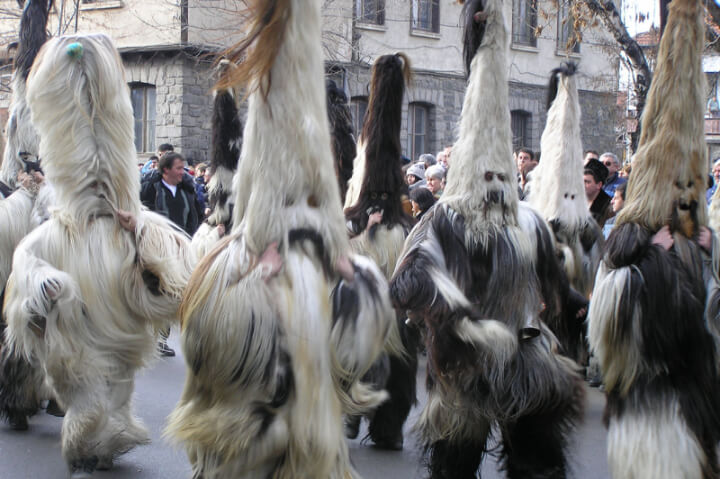
All around the country, men dress up in hairy costumes with elaborate headdresses or wooden masks, to perform dances and rituals to ward off evil spirits.
The custom is said to have Thracian origins, and predates Roman times.
The tradition isn’t unique to Bulgaria, there are variations across the Balkans, but I felt it was unique enough to include.
Kukeri celebrations do not happen on a specific date. They are held all over Bulgaria between January and April, but the vast majority are in January and March.
Wikipedia says that the festivals happen between New Year and Lent, which seems accurate, but it’s also really funny that this pagan ritual is somehow dictated by a Christian holiday!
Bulgaria is Famous for Rose Oil
Bulgaria produces between 70% and 80% of the world’s rose oil.
Maybe this should have been in Bulgaria’s top claims to fame, but it isn’t mentioned as often outside the country.
Once you are in Bulgaria, you will see a rose-themed shop in almost every mall or shopping district.
They sell rose soaps, lotions, water, and even rose-flavored products.
There is also a rose festival in Kazanlak.
Bulgarians Praise Rakia’s Health Benefits
It’s funny that while many Bulgarians praise the health and anti-aging benefits of rakia, the standard warning to outsiders is that it might kill you!
(Figuratively…but possibly literally.)
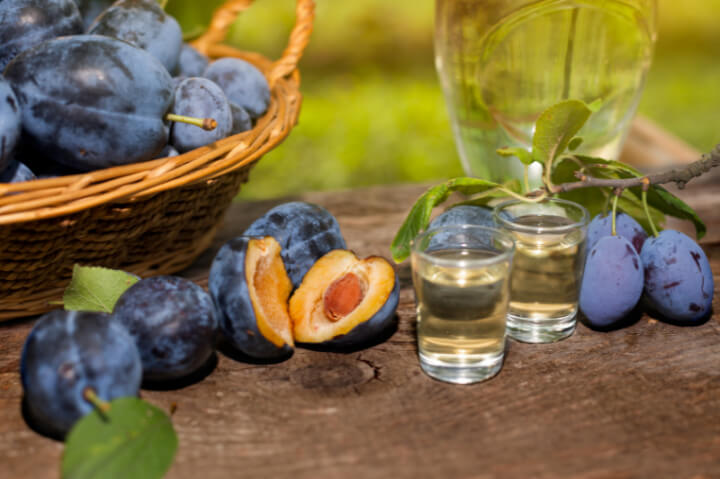
Rakia is a strong fruit-based liquor that is proudly homemade across the country. It is similar to brandy, but without any regulated alcohol percentage.
Basically, it’s moonshine.
You can also by commercial rakia, which is safer, but widely looked down on by true rakia lovers.
Anyways, rakia is sworn to keep you fit and trim by burning your extra fat. It certainly feels that way.
Bulgaria Borders Many Countries
Bulgaria has a lot of neighbors!
Being from Canada or the US, we are used to having only one or two friends next door.
Bulgaria manages to border five countries, while also not having a single eastern neighbor.
The whole of northern Bulgaria borders only Romania.
To the south, the country shares borders with Greece and Turkey. Western Bulgaria meets the borders of North Macedonia and Serbia.
This means that there are no fewer than four points in Bulgaria where you can look out over three countries at once!
In fact, if you wanted to, you could drive for 13.5 hours and see all four of those points in a single day (and thus five countries)…but it’s probably not worth it just for a brag.
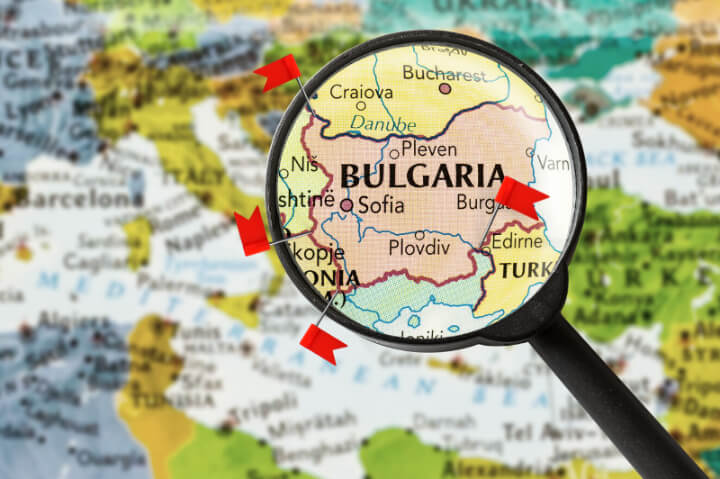
Bulgarians are Named According to Tradition
In Bulgaria, most people still follow the old naming tradition, which means that your middle name is a derivative of your father’s name, no matter your gender.
For example, if your name was Alexander Hristov Angelov,* your father’s name would have been Hristo Angelov.*
Girls are named the same but with the feminine version, so your name might be Elena Hristova Angelova.*
*not meant to discuss any real people, I chose common Bulgarian names at random.
If there is no father in the picture, the naming tradition continues using the mother’s first name instead.
Mennonites here do something similar, but instead their middle name is the first letter of their mother’s maiden name. For example, my husband Jason’s middle name is just the letter “D.”
Bulgarians Celebrate Name Days
In Bulgaria, people celebrate their name days much like a birthday.
Your name will be celebrated on a particular day along with everyone else who shares your name, a similar name, or just any other name celebrated on that day.
Often name days are dictated around the celebration of a saint that your name is derived from, which is easier in a culture like Bulgaria where many names are chosen because of tradition.
If your name is not on the list, you may celebrate your name day with names that are close enough, or mean the same thing. At that point it is a little arbitrary.

Shaking Your Head and Nodding are Opposite in Bulgaria
Bulgaria is one of very few places where nodding means no, and shaking your head means yes.
I actually think this may be changing a little. I noticed that in the bigger cities to gesture “yes” many people simply dip their head to one side, as if to say “okay.”
It can definitely still be confusing, because it’s basically impossible for an expressive person to stop themselves from nodding all the time. (Me.)
In Bulgaria your face says “yes,” but your body is saying an enthusiastic “no.”
Bulgarians Borrow Words
In Bulgaria there is a formal way to say “thank you” but instead everyone says “Merci.”
They also say “Ciao” for goodbye.
Bulgarians Invented Cyrillic
The Cyrillic script that is in use across Russia, the Ukraine, and many Balkan countries was invented in Bulgaria.

Tsar Simeon the Great of Bulgaria commissioned a new written language, which was created in the late 890’s by Saint Clement of Ohrid.
Although the very first Cyrillic alphabet looks quite different than it does today, it was adapted over time from the Bulgarian invention.
They Misplaced a Hero’s Bones (Or Did They?)
This is not so much a fun fact as it is an interesting story, but it deserves a place here with other weird and wacky Bulgarian history.
It was rumored that Bulgarian hero Vasil Levski, who fought for Bulgarian liberation from the Ottomans, was buried under the medieval “Church of St Petka of the Saddlers” in Sofia.
This was sometime after his execution in 1873.
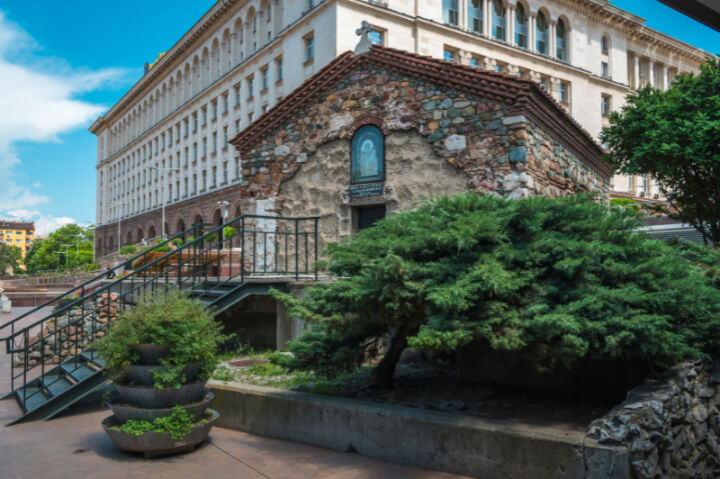
In 1956 a team was established to excavate and see if the matter was true.
What happened next was either an elaborate political plan by the current communist government, or a gross mishandling of an archaeological excavation.
At the end of the day, the bones were “lost” and key players say the wrappers had been eaten by mice at the lab and therefore the bones couldn’t be tested.
I’ve seen enough Dateline that I had some questions.
I wanted to answer them here, but I ended up writing another article about it, because it was way more interesting and involved than I realized.
Seriously, this story should be a movie.
Come Back Soon!
I am learning new things about Bulgaria all the time. I am sure I will revisit this post regularly to add more interesting facts about this unique country.
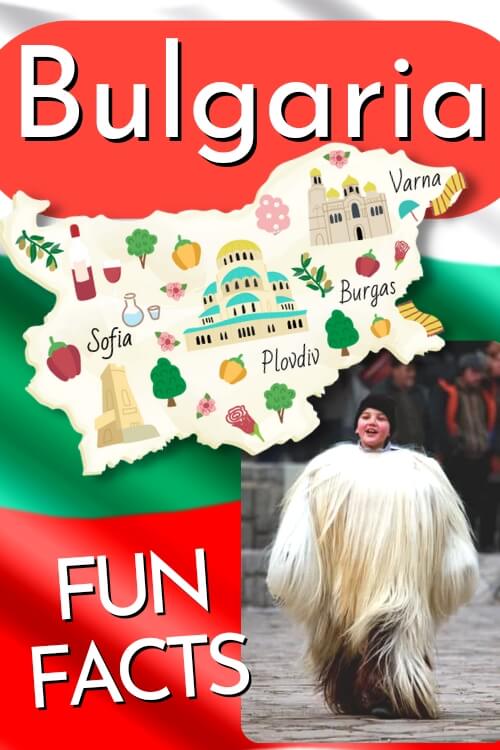
In the meantime, check out one of my other articles:

